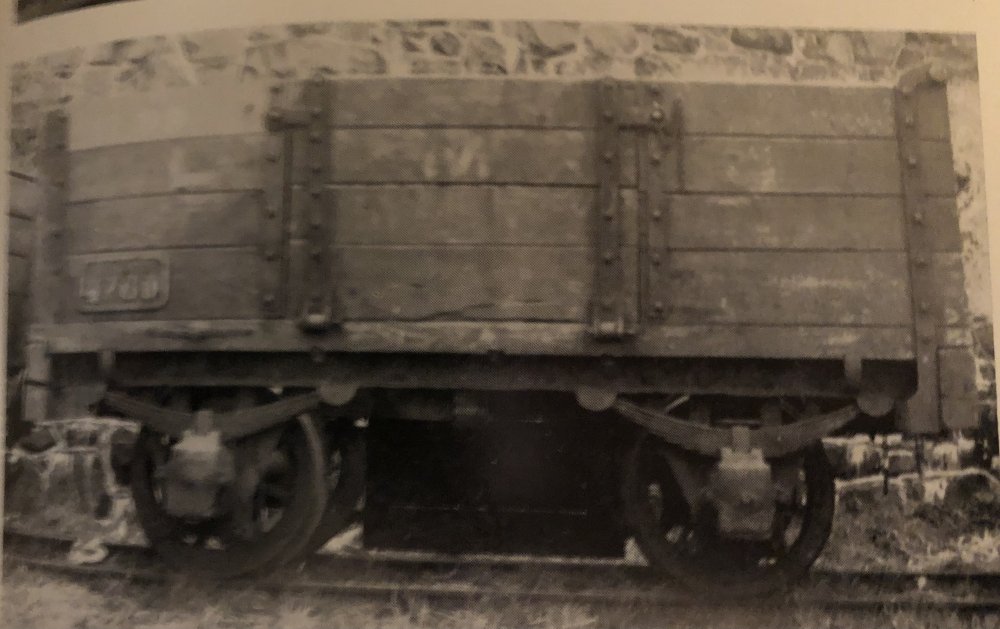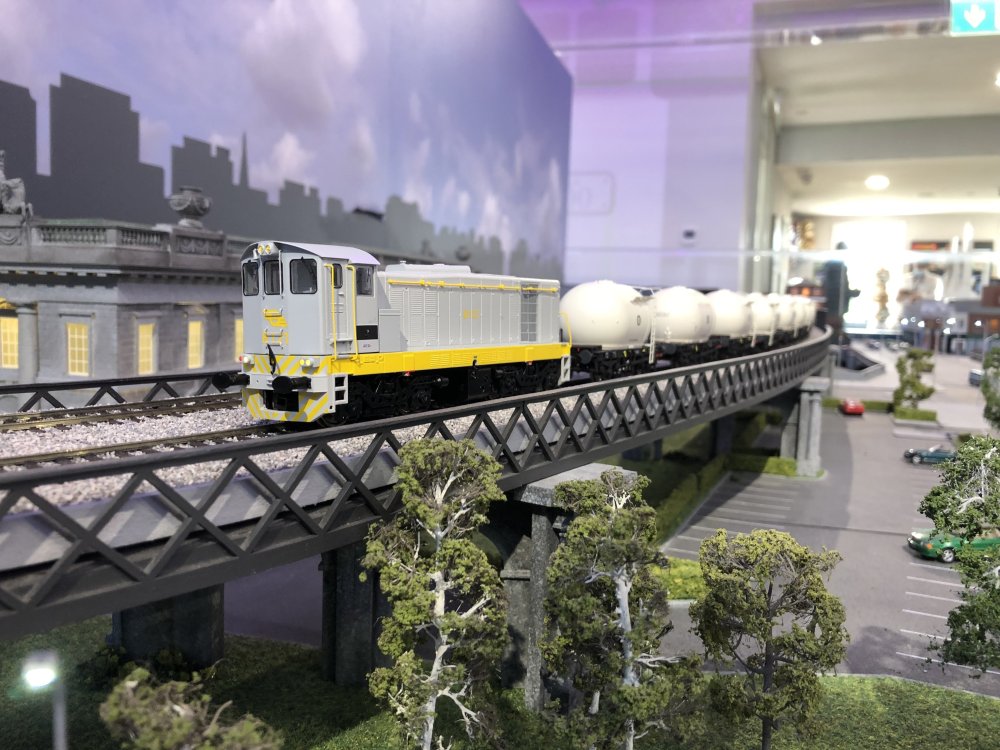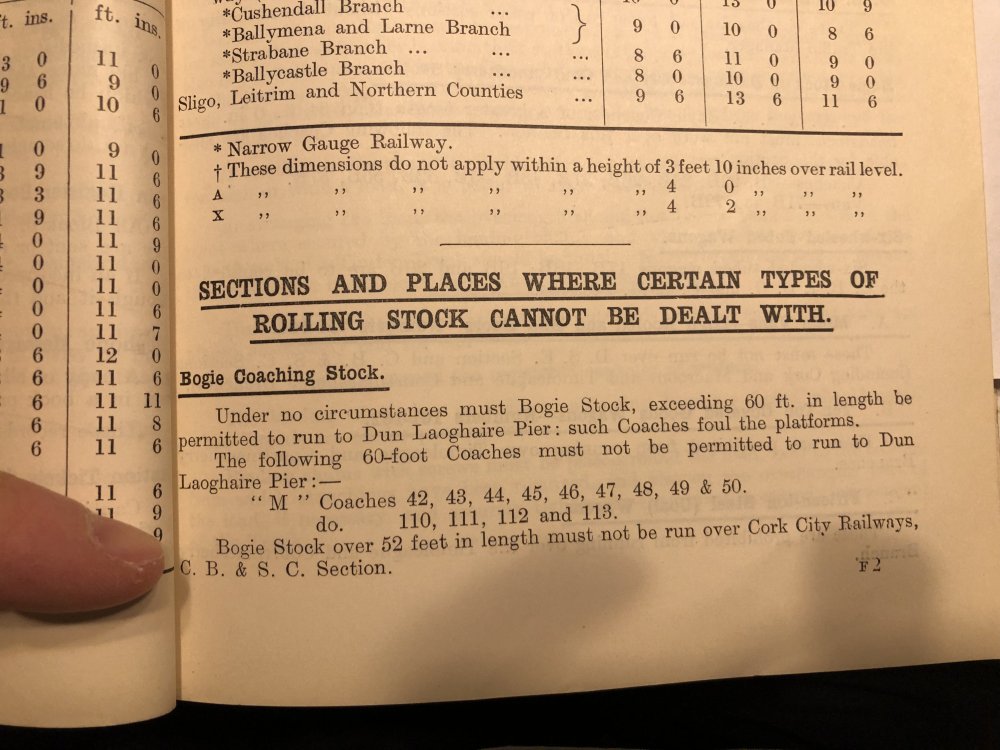-
Posts
15,930 -
Joined
-
Last visited
-
Days Won
394
Content Type
Profiles
Forums
Events
Gallery
Blogs
Community Map
Everything posted by jhb171achill
-
A12 is a perfect “crossover” between the end of steam and the re-engining programme, itself finishing the same year the “supertrains” started. A black “A” with or without yellow ends will be happily accurate with “snail”-clad loose coupled wagons, and a 50/50 mix of green and black’n’tan carriages, passing along beside a loco shed with rusty withdrawn steam engines in it; but also it will be happy alongside a class sister now hauling squeaky clean new Cravens, with its new GM engine, tan lower band, and “R” after its number. Place it on the GNR main line, sitting in Drogheda, and the new Hunslet-hauled Mk 2 “Enterprise” can swing by, taking this comparison to its ultimate extent. The 1960s saw the biggest changes in Irish railways in their history, and the black “A” - with AND without the yellow patch - was at the centre of it.
-
In which case, I wonder what became of Russell Currie’s notes or research material…..? All too often, valuable research material gathered by a railway historian, researcher or author gets chucked in the bin when he passes on….
-
Beasts of Beauty!
-
What appears in that pic is very much in line with what my own impression is, from snippets I've picked up over the years. The challenge, of course, is scratchbuilding models of their very unique coaches! While I do not have definitive details - they haven't survived according to Ernie Shepherd - I do know that at various stages before 1925, CBSCR passenger stock was all-green, and other times green with cream or white upper panels. And yes, 467 was what I was thinking for CIE green!
-
Addendum to the above; some broad gauge wagons were close to those numbers too, so another possibility is a 5'3" goods van. If so, probably scrapped in the 1960s.
-
Probably one of these: These were narrow-gauge wagons built by the Ballymena & Larne Railway, eventually taken over by the MR(NCC), then LMS(NCC), finally (Ballyclare-Larne only) UTA. Some of them ended up on turf railways with BnM. There's one at the C & L in Dromod which followed such a route. They lasted until the last bit of that line closed in 1950. I don't think any of that type were transferred to the Ballycastle line. Derelict ones were to be seen lying about at Larne during the fifties after the B & L line closed entirely. NCC wagon records do not seem to have survived, possibly as a result of York Road station being bombed in the 1940s, possibly due to Inchicore-style clearouts of old papers in the 1950s, so the above may not be gospel - but the number series suggests it.
-
The green shade used by the CBSCR initially is not known, but by 1925 when the dreaded grey paint enveloped everything, the livery used on both coaches and locomotives was supposed to have been similar to one of the shades used by the English SR - and consequently unlike anything used elsewhere in Ireland. Then, of course, CIE green which was lined black and white. Beware of Alphagrafix liveries - most are incorrect, some seriously so! I don't think it was 466 which went to the Big Smoke, though I do have a note somewhere of which one it was. That model appears to have a yellow number - on the green livery it should be light green, with yellow numbers only on the grey or black liveries.
-
464 is perfect for you, Westcork, as it's the only one which got black! Excellent build job. Interesting you mentioned the three green liveries - initially the CBSCR, then one of the class (I think just the one) got the CIE green in the fifties. Dunno if you like that livery, but a CIE green one would look nice, though I'm not sure where you'd get the correct light green numerals.
-
British locos and stock that can be disguised as Irish
jhb171achill replied to Westcorkrailway's topic in Irish Models
I've two of these in LMS livery. They are indeed a good "2-ft rule" approximation for Bredins or CIE 1951-3 series, or even some sort of broadly generic "laminate", but by simply repainting the silver roof dark grey and deleting the letters "LMS" from the sides, you've actually exact GSR livery they had as new, correct lining and all; at that time the GSR, LMS and NCC used the same maroon and even had identical lining (NCC latterly less or no lining). So I'm holding the two I have for eventual use as weathered "Bredins" still in GSR livery, once I've enough six wheelers in the older green to surround them with, for a late 1940s or early-1950s version of operating. (Need more ancient-design wagons and two more steam locos as well). -
There was indeed a BnM layout featured somewhere in the past - I think on IRM? Looked very well too.
- 10 replies
-
- narrow gauge
- bord na mona
-
(and 2 more)
Tagged with:
-
CIE locomotive livery variations 1960-1990
jhb171achill replied to jhb171achill's question in Questions & Answers
For your period of operation, Noel, a green one would fit, so would a black one with and without the yellow patch, PLUS both the "high band" and "low band" black'n'tan liveries! (Please don't let your wallet hear me saying that, it'll have Multiple Conniptions, screaming fits and the heeby-jeebies........!) -
That’s actually interesting you saying that, Jason. I had been bumbling about with different types of backscenes, but I want to look like some flat boggy and sparsely inhabited stretch in the west, where the sky is usually not predicting that any planned picnic is likely to be a pleasant experience! One of the earliest pics I posted of it looked just like that, and by sheer coincidence, I might add, rather than any artistic genius on my part. Those recent pics with a backscene from one of the modelling “comics” look ok if it was meant to be in, say, Co Wicklow - but look far too “verdant” for a remote west Cork or Kerry location. But you’ve got me thinking!!
-
Yes, I know what you mean and agree 100%. It can actually look in some of the pics as a typical Kerry “about to rain” distant sky, maybe viewed across a stretch of barren bogland.
-
Ah! I was referring to CIE only. If you want to include the north, it is possible that one might have been included in the consist of a train between Dundalk and Great Victoria Street, specifically - and hauled, again specifically - by a "Jeep" and in the company of laminates or ex-GNR coaches in CIE livery. A word of caution though; more than once at that time I personally encountered confusion amongst our northern colleagues on the difference between laminates and Cravens. I would not rule out such a thing happening, though - but certainly not in any circumstances - even shunting - on CIE lines with CIE engines.
-
New Bachmann and Hornby factory in Athboy?
-
I'm thinking that, actually. The thing may not be 101% perfectly level. Also, there are several small undulations in the track.
-
An 0 gauge loco hauling 009 stock................?
-
-
I’m trawling a GSR 1935 WTT Appendix at the moment. Look at these extracts; how did they square these with getting AEC railcars and 57-60ft bogie coaches across the Cork City line? And the T & C line had slightly longer vehicles (ex-GSWR) in the 1950s…..
-
I have one here from 1934. If there's anything you want me to copy out of it and ping to you, PM me.
-
Tis he who got me back into it, having abandoned it in my very early 20s..... I just had to have a 141. Up to only a short few years ago I was more than happy with a large collection of German and Austrian narrow gauge! "Dugort Harbour" was actually originally conceived (baseboard-wise) as an 009 set-up..........
- 80 replies
-
- 3
-

-
No, never. The first Cravens went into traffic several months after the last steam locos had stopped operating. Similarly, they never ran with a train containing six-wheelers, as these disappeared from traffic the same time as steam, March 1963; the very first Cravens were late 1963, others 1964 and up to 1967. For steam, the following carriages are suitable, in order of age: 1. Six-wheelers (by late 50s, MGWR & GSWR types - WLWR & DSER ones seem to have almost totally gone). Four six-wheeled full brakes remained, all of GSWR origin, and gained the black'n'tan livery; the last two surviving until the late 1960s. 2. Wooden bogies - by late 50s almost all of GSWR origin - a handful of MGWR and one or two DSER and WLWR. 3. Bredins - 1930s GSR 4. Early 1950s CIE - essentially Bredin design 5. Park Royals 6. Ex-GNR coaches of various types appeared on CIE from very late 1958. 7. Laminates 8. "Tin Vans" - four wheeled only - luggage vans and heating vans (the 6-wheeled heating vans appeared in 1965). Bogie generator vans are late 1960s (Dutch) and early 1970s (BR) onwards. For the DIESEL era: The "A", "B101", "C" and "B121" classes all ran with the above stock in green when new, but obviously "graduated" to more modern stock later. The 141s started life alongside the Cravens, but also would have hauled all of the above bar the passenger-carrying six-wheelers. Likewise the 181s. By the time the 071s appeared, Mk 2s had appeared, and of the above, only Cravens, Park Royals and laminates remained. The very last Bredins were withdrawn shortly before the 071s went into traffic. The quirky one, of course; the "G" class. One hauled a MGWR six-wheeled passenger brake on the Foynes line for a few weeks, and several members of the class hauled "laminate"-based 1904 and 1910 (separately) on the Loughrea branch between 1963 and 1975!
-
The demountable beet was a one-off experiment, albeit one that entered traffic. I saw it in use, in the midst of a train of "ordinary" double-deck beet wagons, at Wellington Bridge in either 2004 or 2005. The newly painted 150 was at the 1996 Inchicore Open Day, where it briefly displayed a New York piece of "bar memorabilia".......(!) The brown single deck beet wain with bits sellotaped onto the ends to make it longer....new one to me! Excellent, and rare photo.
-
New Cravens?? Wow - excellent.
-
I need to add all sorts of slime and weeds to the missing tiled area - indeed, the whole tiled area - it looks far too pristine! The signal is also irritating - it's been assembled incorrectly with the ladder the wrong side! (not by me!......)
.png.c363cdf5c3fb7955cd92a55eb6dbbae0.png)






